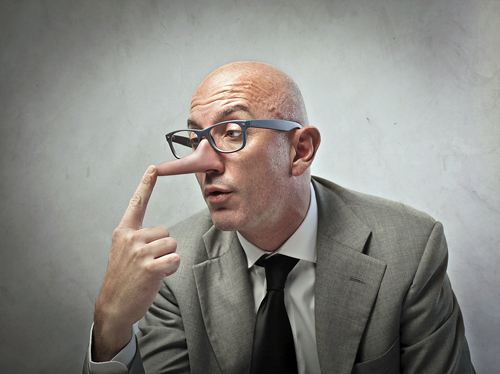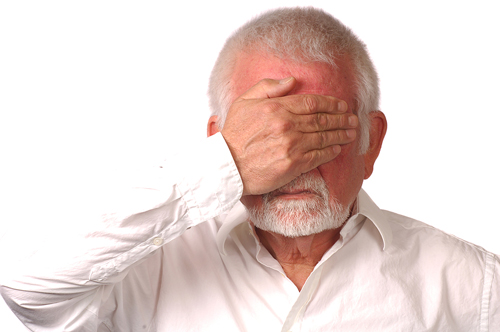Last newsletter, we confronted Bob Carroll’s Skeptic’s Dictionary — not so much because it was of any importance, but because it feeds on some of the negative bromides used to negate alternative medicine. The interesting thing is that these misconceptions seem to have acquired a certain cachet, not because they are supported by fact, but simply because they have been repeated so many times. Things such as:
- Energy work in alternative healing has no basis in scientific fact. It does.
- Chelation therapy is a myth. As it turns out, it not only isn’t, it’s the only FDA approved treatment for lead poisoning.
- There is no need for supplements or organic food. Unfortunately, that’s empirically untrue.
- Colons do not store fecal matter…which turns out to be a huge surprise to the millions of Americans who are chronically constipated.
In any case, I thought we were done with the issue, but as it turns out, we received a torrent of emails on the newsletter. It seems there is a great deal of pent up anger in the alternative health community when it comes to the so-called professional skeptics like Bob Carroll and Stephen Barrett (more on Stephen later). A couple of these emails were brought to my attention by the Foundation staff. They contained a copy of correspondence that two of our readers, Drs. Suresh Shottam and Ray Shelton (bios at the end of the newsletter) exchanged with Bob Carroll. I thought they were interesting enough and added enough new information to the discussion to warrant publishing them here — with my added editorial comments in green italic. By the way, perhaps the most interesting thing about these exchanges is that whereas Bob Carroll ignored the email the Baseline of Health Foundation sent to him addressing both legal and factual errors in the webpage he devoted to me, he personally answered both Dr. Shottam’s and Dr. Shelton’s emails — and quickly at that. Not to read too much into it, but it is interesting — I’m just saying.
So enjoy; and truly, after this, we will move on to new topics with our next newsletter.
Exchange between Dr. Suresh Shottam and Dr. Robert Carroll
Hello Dr. Carroll,
I thought you might find this article interesting. It is addressed to people who think like you. [The article Dr. Shottam is referring to and that is included below is unattributed. Ed.]
Cheers,
Dr. Shottam
Mainstream Medicine about Face (Hair They Come to Save the Day)
When I read the news, I laughed out loud.
It never ceases to amaze me how the medical mainstream can turn on a dime, suddenly embracing a theory they had previously thrown right under the bus. We’ve seen it happen with nutritional therapy, homocysteine, the inflammation theory…the list could go on and on. [On and on indeed! We can add to it: diverticular disease, trans-fats, omega-3 fatty acids, probiotics, fiber, magnetic therapy, and vitamin K just to roll off a few. The only thing that I would add to it is that after the medical community makes its about face, one thing that I find particularly galling is that there is never any acknowledgement about how the alternative health community discovered the issue and staked out the territory decades earlier. And this is not a question of ego. Quite simply, if you “steal” every validated concept that the alternative health community comes up with, claiming them all as your own, it allows you to claim that nothing of note ever came from alternative health — as Bob Carroll does. That’s actually a big deal. Ed.]
Now it’s happening again, this time with hair analysis.
A recent study out of Utah’s Brigham Young University reports that doctors can use hair analysis to diagnose eating disorders. Here’s a direct quote from MSNBC’s coverage: “…hair could reveal information about a person’s day-to-day nutrition.” HealthDay quoted the study’s lead researcher, BYU biology professor Ken Hatch, as saying, “Your body records your eating habits in the hair. So, we can use that to tell the nutritional health of an individual.”
 As the teenagers say, DUH. Open-minded doctors have been singing the praises of hair analysis for many years. Meanwhile, conventional medicine has gone out of its way to discredit the practice. Hair analysis has been raked over the coals many times, in JAMA articles and prime-time news magazines. Each time the audience was intentionally left with the impression that hair analysis was just another ruse cooked up by a bunch of quacks out to steal your money. [JAMA actually published an article by Stephen Barrett discrediting hair analysis.1 Stephen Barrett. “Commercial Hair Analysis Science or Scam?” JAMA. 1985;254(8):1041-1045. <http://jama.ama-assn.org/content/254/8/1041.abstract?sid=33779e1e-8f30-4340-8f9d-ddd57ad26893> But as numerous responses to the article demonstrated, Barrett’s methodology and analysis were both seriously flawed.2 George Hickok. “Letter: Commercial Hair Analysis: Science or Scam?” JAMA. 1985;254(8):1041-1045 <http://jama.ama-assn.org/content/255/19/2603.2.short> And actually, for JAMA to publish an article by Stephen Barrett is pretty stunning and about as blatant an admission of bias as could possibly be made. We’ll discuss Dr. Barrett in some more detail a bit later in this newsletter. Ed.]
As the teenagers say, DUH. Open-minded doctors have been singing the praises of hair analysis for many years. Meanwhile, conventional medicine has gone out of its way to discredit the practice. Hair analysis has been raked over the coals many times, in JAMA articles and prime-time news magazines. Each time the audience was intentionally left with the impression that hair analysis was just another ruse cooked up by a bunch of quacks out to steal your money. [JAMA actually published an article by Stephen Barrett discrediting hair analysis.1 Stephen Barrett. “Commercial Hair Analysis Science or Scam?” JAMA. 1985;254(8):1041-1045. <http://jama.ama-assn.org/content/254/8/1041.abstract?sid=33779e1e-8f30-4340-8f9d-ddd57ad26893> But as numerous responses to the article demonstrated, Barrett’s methodology and analysis were both seriously flawed.2 George Hickok. “Letter: Commercial Hair Analysis: Science or Scam?” JAMA. 1985;254(8):1041-1045 <http://jama.ama-assn.org/content/255/19/2603.2.short> And actually, for JAMA to publish an article by Stephen Barrett is pretty stunning and about as blatant an admission of bias as could possibly be made. We’ll discuss Dr. Barrett in some more detail a bit later in this newsletter. Ed.]
Now, I’ll admit that the application for eating disorders is a novel idea, and an interesting one. But the basic premise is the same for everyone: your hair can reveal valuable information about your eating habits and your health.
In progressive medicine, hair analysis is most often used to detect heavy metal toxicity. It can detect the build-up of several common metals, like aluminum and mercury. And if you’ve got a build-up of these two, you want to know: aluminum has been linked to Alzheimer’s disease, and mercury is associated with multiple sclerosis, chronic fatigue syndrome, and other neurological symptoms.
You’d be surprised how easy it is to build up dangerous levels of these toxic metals. We’re exposed to aluminum through antiperspirants, toothpastes, cookware, and baking powder, and mercury through old dental fillings and in our poor polluted fish. Unfortunately, in today’s world, toxic metals are just about everywhere.
But fortunately, there’s something you can do about it. Hair analysis can be the first step, to see if you have a problem. One thing the critics have gotten right: it’s important to choose a reputable hair analysis lab that uses ICP-mass spectrometry and isn’t trying to sell you anything. (But isn’t that true of any medical procedure?) One lab I like is Doctor’s Data.3 <http://www.doctorsdata.com/home.asp> They’ve been doing this for over 30 years, and they know their stuff. [Incidentally, Doctor’s Data is involved in a protracted law suit — two years and counting — against Stephen Barrett. Ed.]
If you find you do have a build-up of toxic metals, then it’s on to Step 2. There are many safe, effective options available. We’ll talk about them some more in a future House Call.
But back to the larger picture – the sudden about-face on hair analysis, the latest example of modern medicine’s schizophrenia. Don’t rely on the conventional “wisdom” when it comes to making decisions about your health. Do your homework and make up your own mind. Who knows — the “alternative” decision you make today may turn out to be the mainstream “breakthrough” of tomorrow. [This happens more frequently than the medical community would ever admit. Just think how many pharmaceutical drugs came from plants first used by native healers: taxol, aspirin, digitalis, quinine, morphine, pseudoephedrine, and vinblastine to name just a few. There are literally hundreds! Ed.]
Bob Carroll responds to the article Dr. Shottam sent as follows:
This is old news, but not as exciting as you seem to think.
The new test analyzes two of these proteins, carbon and nitrogen. Based on the makeup of these proteins, the researchers said they’ve been able to diagnose eating disorders.” [Note: Bob Carroll is not quoting from the actual study here, nor from the article sent by Dr. Shottam, but from a different third party article written by Dr. Janet Hull.4 Dr. Janet Starr Hull. “Hair Analysis May Help Detect Eating Disorders.” janethull.com 16 Oct 2006. (Accessed 9 May 2012). <http://www.janethull.com/newsletter/1206/feature_article.php> The importance of this will be evident in a moment. Ed.]
“carbon and nitrogen aren’t proteins” [Of course they’re not proteins, but Bob Carroll is the only one saying that. As it turns out, neither the article nor the original study say that carbon and nitrogen are proteins. Bob has singled this misunderstood statement out as a simple way to discredit the entire study. But snarkiness aside, this observation is actually based on a misreading of the quotation taken from Dr. Hull’s article as a result of the “new” trend in comma usage: dropping the last comma in a series. Insert the missing comma, and the author’s meaning becomes clear, “The new test analyzes two proteins, carbon, and nitrogen…” In other words, the article is referring to three different things that were analyzed — not one thing comprised of two parts. And if one goes to the source (the actual study), which is easily available online, there is no ambiguity at all.5 Kent A. Hatch, Morgan A. Crawford, Amanda W. Kunz, et al. “An objective means of diagnosing anorexia nervosa and bulimia nervosa using 15N/14N and 13C/12C ratios in hair.” Rapid Commun. Mass Spectrom. 2006; 20: 3367– 3373. <http://www.es.ucsc.edu/~pkoch/EART_229/10-0201%20Appl.%20N%20in%20animals/SUPPLEMENTAL/Hatch%20et%2006%20RCMS%2020-3367.pdf> The researchers clearly state they were measuring carbon and nitrogen isotopes as found in the dietary proteins that had been incorporated into growing hair shafts. One can only wonder why Dr. Carroll didn’t go to the source. It took me about 20 seconds to find it on Google and verify the proper reading of the statement. Ed.]

“Hatch noted that the test needs to be refined before it could be used in a medical setting. Right now, the test also picks up people who don’t have an eating disorder but eat a vegetarian diet, he said.”
“The test might be able to give a history of an eating disorder, Bulik said, but it needs further refinement. “As a stand-alone diagnostic tool, we are not there yet,” she said.” [This appears to be one of Dr. Carroll’s favorite tactics: put words in someone’s mouth and then negate their arguments by dismissing the quote you made up for them. In truth, no one said the methodology was flawless — only that it was strongly indicative of the fact that what you ate is reflected in your hair and that this supports the concept of hair analysis. And those facts still stand. Ed.]
Last but not least: most of the quacks who do hair analysis make all kinds of claims about toxic metals and the need for chelation…this kind of test is of a different order, in case you hadn’t noticed. [It’s hard not to think that Bob Carroll’s use of the word “quacks” pretty much screams that anything coming from this source is going to be prone to “bias” and “lack of open mindedness.” Bias and close-mindedness, not really the hallmarks of a critical thinker I must say! Ed.]
Bob Carroll
Dr. Shottam replies
Hi Bob:
Not so fast…this article does not make your case “open and shut” as you might think. Notice the following…and I quote:
1. “The new test analyzes two of these proteins, carbon and nitrogen. Based on the makeup of these proteins, the researchers said they’ve been able to diagnose eating disorders.
“carbon and nitrogen aren’t proteins”
CORRECT. Carbon and nitrogen are not proteins. HOWEVER, that absurd observation was made by your hallowed mainstream researchers (NOT some fringe lunatic alternative medicine nutcases). It is such people’s research that people like you quote and accept as iron-clad. [Whoops! Dr. Shottam fell victim to Bob Carroll’s nonsense here. As we’ve already discussed, the error was not the researchers’, but Bob Carroll’s in misreading a third party source. And while we’re at it, can’t we all just go back to using the last comma in a series to avoid similar confusion in the future? Ed.] Remember, the article I sent you is about mainstream researchers trying to appropriate an alternative diagnostic test that was dismissed as voodoo nonsense, as their own, new “finding”. Whether or not the test needs refinement is beside the point. Looks like you missed the point I was trying to make. [Now, Dr. Shottam is back on point. He is correct that the fundamental argument against hair analysis6 Barrett. “Hair Analysis.” <http://jama.ama-assn.org/content/254/8/1041.abstract?sid=33779e1e-8f30-4340-8f9d-ddd57ad26893> is that nothing you eat or are exposed to is accurately represented in your hair. Hair is nothing but keratin protein — no internal history to be found there. Dr. Shottam’s point, and it is accurate, is that this study strongly indicates that if one looks more closely at that protein, it is possible to learn what and how someone ate. It doesn’t necessarily prove the efficacy of “hair analysis” for heavy metals, but it certainly supports the concept. Ed.]
2. “…the test also picks up people who don’t have an eating disorder but eat a vegetarian diet…”
This is what one calls a FALSE POSITIVE Bob. I can name a dozen “established mainstream tests” that throw up not only false positives but also false negatives. And yet, people like you have no problems with doctors using such tests to arrive at medical conclusions. eg: Mammogram false positives lead to unnecessary breast surgeries (but I guess that’s okay with you). Wonder if it would still be okay with you if it was your mother, wife, or daughter at the receiving end? [Medical research has shown that mammogram false positives can be 90%…or higher. Ed.]
 Bottom line: Sure the hair mineral test may need refining (as does the mammogram, the pregnancy test, etc., etc.). Just because a test needs refining, does NOT invalidate it. Don’t throw the baby out with the bathwater. It will not belittle you to admit that the test has potential and the fringe nuts were right on this one!
Bottom line: Sure the hair mineral test may need refining (as does the mammogram, the pregnancy test, etc., etc.). Just because a test needs refining, does NOT invalidate it. Don’t throw the baby out with the bathwater. It will not belittle you to admit that the test has potential and the fringe nuts were right on this one!
By taking your stubborn stance, you are exhibiting a clear bias… that is NOT THE WAY OF THE TRUE SCIENTIST Bob. Although Bob Carroll is not a scientist and has never claimed to be one, he has set himself up as a self-proclaimed expert on scientific matters, so I would have to say that in the final analysis the criticism is fair. Ed.3. “…the quacks who do hair analysis make all kinds of claims about toxic metals and the need for chelation”
This statement has got to be the most illogical statement I have ever heard!
For as long as I can remember, the ONLY method of removing toxic metals such as lead, mercury, etc. in any hospital across the world is through CHELATION. Therefore, Chelation is an accepted mainstream therapy and not the concoction of quacks. By making such a statement, you are actually questioning the very science you are defending (like a soccer player shooting the ball into his own goal)! God!! >Actually, I made the same point in the last newsletter. It’s certainly beginning to look like Bob Carroll has no intention of letting facts get in the way of his opinions. He simply ignores any inconvenient truths — truly a new definition of Critical Reasoning. Ed.
Guys (you and Janet), please do some serious soul searching to see if your scientific myopia is bringing you dangerously close to illogic and lunacy (the very crimes you accuse alternative practitioners of committing). Dr. Hull is actually a proponent of hair analysis. She was just reporting on the study — largely from the same viewpoint as Dr. Shottam, that this study is supportive of hair analysis. Bob Carroll distorted her article to make his points. Ed.
And finally…
Clarke’s First Law: When a distinguished but elderly scientist (read that as mainstream researcher), states that something is possible, he is almost certainly right. When he states that something is impossible, he is very probably wrong (about alternative phenomena he knows nothing about)
Suresh Shottam
A final note before we look at the exchanges between Dr. Shelton and Dr. Carroll. One of the main complaints of the medical establishment when it comes to hair analysis is that it’s difficult to separate what is “in” the hair from what is “on” it. This problem arises from the ease of external contamination (from air and dust, and hair preparations, etc.) to the waxy nature of hair which holds onto contaminants and to the difficulty in decontaminating hair prior to analysis. The procedure used to decontaminant the hair analyzed in the referenced study might actually eliminate that as an issue. The hair samples were prepared as follows: the root ends of the sample strands of hair were lined up and glued to a piece of surgical wire with Super Glue™. The samples were then sonicated (exposed to high intensity sound waves) for 15 min in distilled water (think ultrasonic cleaning) and for an additional 15 min in petroleum ether to remove contaminants from the hair’s surface. That should pretty much remove any surface contamination. In addition, from the entirety of the exchange with Dr. Shottam, we can once again see, as we did in the last newsletter, that Bob Carroll, does not support his opinions with actual studies, but rather relies on a know-it-alll attitude and a misreading of second hand reports about said studies. And we can also see that even when confronted with scientific studies, Dr. Carroll dismisses out of hand any facts that conflict with his already established prejudices. this is the antithesis of critical reasoning. The bottom line, as Dr. Shottam clearly points out, is that the referenced study is highly supportive of hair analysis as a diagnostic tool — despite Bob’s fulminations to the contrary. Ed.
Exchanges between Dr. Ray Shelton and Dr. Bob Carroll
Dear Dr. Carroll,
I just discovered your website and read parts of it with great interest. No doubt, I will read more of it in the days to come.
 My training is in Physics…a hard science. By comparison, most other fields are held to less rigorous standards (as I’m sure you are aware) — particularly in the area of research. That’s why I am surprised by some of the positions you take and the viewpoints you espouse. Eg: You say in the FAQ portion of your website, and I quote, “Dozens of acupuncture studies demonstrate that sham acupuncture is just as effective as true acupuncture, but rather than see that this shows the effects of both are placebo effects, defenders of acupuncture claim the scientific evidence validates the claim that acupuncture works independently of the placebo effect.”
My training is in Physics…a hard science. By comparison, most other fields are held to less rigorous standards (as I’m sure you are aware) — particularly in the area of research. That’s why I am surprised by some of the positions you take and the viewpoints you espouse. Eg: You say in the FAQ portion of your website, and I quote, “Dozens of acupuncture studies demonstrate that sham acupuncture is just as effective as true acupuncture, but rather than see that this shows the effects of both are placebo effects, defenders of acupuncture claim the scientific evidence validates the claim that acupuncture works independently of the placebo effect.”
Let’s say I accept that assertion.
But did you know that there are at least 39 major studies that show that sham bypass surgeries show the same OR BETTER results than the “real” thing? How come you are not aware of that (or choose not to mention that)? Secondly, sham arthroscopic surgeries show the same results as the “real thing”. (References can be provided upon request). [7 Moseley JB, O’Malley K, Petersen NJ, Menke TJ, Brody BA, Kuykendall DH, Hollingsworth JC, Ashton CM, Wray NP (2002). “A controlled trial of arthroscopic surgery for osteoarthritis of the knee”. New England Journal of Medicine 2002;347:81-8 347 (2): 81– 8. <http://www.ncbi.nlm.nih.gov/pubmed/12110735> ,8 Henry K. Beecher, M.D. “Surgery as Placebo. A Quantitative Study of Bias.” JAMA. 1961;176(13):1102-1107. <http://jama.ama-assn.org/content/176/13/1102.short> Ed.
Why then don’t you apply the same logic to the above as you do the acupuncture? That is the way of the true scientist. [To be fair, Dr. Carroll is not a scientist. He is a teacher of philosophy, logic, and critical reasoning — an outgrowth of the Socratic Method. These are liberal arts disciplines, not scientific ones. Ed.
From a physicist’s point of view, there can be just one conclusion from the above: The PLACEBO effect plays a VERY IMPORTANT ROLE in the healing process be it through alternative or mainstream therapies!
In fact, one of my pet peeves is that researchers don’t give enough respect to the placebo effect. Do you know there are many, many studies where placebos trump drugs? When that happens, researchers resort to statistical manipulation — such as confusing relative risk with absolute risk — to push whatever drug they are researching. [The placebo effect is powerful, but there’s a lot more to alternative health than just the placebo effect. For an extensive discussion of this issue, check out Alternative Medicine is Valid. Ed.]
It looks like you are applying double standards. Not befitting a person of your credentials Dr. Carroll.
Science is too important to be used as a tool to promote hidden agendas.
Your recommendation of Quackwatch as a legit scientific source is baffling. Stephen Barrett (a psychiatrist who flunked his board certification exams and had a laughably low number of patients in his first and only job as a practicing psychiatrist in New Jersey) could not survive as a legitimate medical practitioner and so made a dishonest living by harassing practicing doctors who were successful, unlike him. That is not my opinion…it is the official opinion of a judge in New Jersey. He fled the state because the law was finally catching up with him. And this is the kind of person you recommend to your readership? (References provided upon request).9Tim Bolen. “Court Orders Quackbusters Barrett and Polevoy to Post $433,715.93 Bond.” Bolen Report 2 May 2007. (Accessed 9 May 2012.) <http://bolenreport.com/feature_articles/feature_article060.htm>,10 “California Superior Court Judge Rules on Quackbuster ‘Credibility.'” quackpotwatch.com.(Accessed 9 May 2012.) <http://www.quackpotwatch.org/quackpots/california_superior_court_judge_.htm> ,11 Tim Bolen, “Failed MD Stephen Barrett.” quackpotwatch.com. (Accessed 9 May 2012.) <http://www.quackpotwatch.org/quackpots/quackpots/barrett.htm> Ed.
This is an appeal to please open your mind to other scientific possibilities that may be beyond (y)our current comprehension, yet probable.
Remember, today’s science is tomorrow’s ignorance. The main qualities one needs to have to be a true scientist are humility and curiosity. Please don’t be so heavy-handed and dismissive with your views.
It would be great if you could post this and your response on your website (I do know you are a busy man).
Respectfully,
Dr. Ray Shelton
Bob Carroll responds
Thank you, Dr. Shelton, not for the insults but for letting me know that my FAQ is outdated. Really?!! Bob Carroll calls the above email insulting?! The strongest thing Dr. Shelton says about Dr. Carroll is that “it looks like you are applying double standards.”And Robert Carroll calls this an insult??! This from the guy who has turned insult and mockery into an art form — not to mention putting words in his victims’ mouths so he can then insult them for the things they never actually said!12 Richard Milton. “skepdic.com.” Alternative Science (Accessed 9 May 2012.) <http://www.sces.info/skepdic-com.html> >Really?! Ed.
It may shock a “hard” scientist like you but I do know about the studies you mention. I probably draw a different conclusion from them than you do, though. At this point, based on his track record, one has to question if Dr. Carroll actually “knows” the studies in question, or just the things people have written about them. And even if he read the actual studies, again based on track record, did he understand them? As we saw above with the hair analysis study, Bob came to a mistaken conclusion about the actual study by not referencing the source. And in our last newsletter, we saw that Bob misread — and totally misinterpreted — a statement on cellular energy that he cited. Only Bob Carroll knows for sure, but based on his track record, one can only wonder. Ed.
My “softheaded” conclusion is that the defenders of practices who found that sham surgery had about the same effect as real surgery deluded themselves when they gave credit to “the powerful placebo” or “the power of belief.” They should have recognized that their surgeries were superfluous. Patients were healing on their own in due time but because they improved after the surgery, they and the docs gave credit to the surgery. This is actually quite brilliant. It seems that Bob Carroll is angling for a job in the pharmaceutical industry, where they get to cherry pick data and throw out any studies that don’t support the benefits of the drugs they are testing. What Bob is saying here is that you can’t count any data indicating the power of the placebo effect because any such data is based on the placebo effect. Or to translate: if Bob Carroll doesn’t like the data, you can’t count it. That’s certainly an approach. I’m not sure it qualifies as scientific or logical, but it’s certainly an approach, even if it is circular. Ed.

Anyway, don’t respond. I’m too busy to deal with “clever” fellows like yourself. I think Bob just taught us all a new definition for “clever” — that is, “scientific, rational, and logical.” Ed.]
Bob Carroll
Dr. Ray Shelton Responds…
Like you, I too am busy, so I’ll leave you with just 3 things to think about (regarding your “soft” conclusions)…
This is in the interest of science and not to belabor the point.
- Look at the LONG-TERM results of the sham surgery vs real surgery. Your “soft” conclusion does not explain the results.
- Recent scientific studies show that heart attacks do not usually occur at the obvious areas of blockage seen on angiograms. AND YET, patients who undergo surgery feel better afterwards. You must admit that the placebo effect cannot be ruled out.
- Many medical procedures defended by people like you (as being scientifically sound), have subsequently been proven to be false and discarded. My prediction: Angioplasty will be one of these. I think it already has been.Ed.Let’s keep our minds open to the possibility that what may not make sense to us with our current mindset, may nevertheless be valid and we will come to understand it at a later stage.Regards,
Conclusion
So what have we learned from our second visit with Bob Carroll?
Well, among other things we’ve learned that yet another “discredited” alternative health staple, hair analysis, is actually being used in scientific research — not in an identical way as used by holistic healers to be sure, but close enough to discredit the discreditors’ arguments against it. At some point, a well conducted, “valid” study will settle the question once and for all, but until then, it’s at worst an open question. We also explored once again, the power of the placebo effect — in both traditional and alternative medicine. And we pretty much locked down the fact that whatever you say about the effect in one discipline has to be carried over to the other. You can’t apply one interpretation of the placebo effect when it comes to medical treatment, and a diametrically opposed one in alternative medicine — merely to suit a pre-existing prejudice.
Also, I think we can now clearly see that a number of the world’s self-appointed, professional skeptics are little more than cyber-bullies who claim to represent science, logic, and critical thinking, but in fact, rely on:
- Misquotation
- Distortion of facts
- Their own blindness
- Innuendo
- Mockery
And all bordering on the legal definition of libel.
I know Robert Carroll taught critical reasoning at Sacramento City College. But critical reasoning is defined as “disciplined thinking that is clear, rational, open-minded, and informed by evidence.” I can only hope he was a better teacher than he is a practitioner since he doesn’t seem to incorporate very much of it in his writings. He is anything but open minded, he quotes inaccurately, and he rarely seems to reference actual source material. And when he does, at least in the examples we’ve looked at in the last two newsletters, he doesn’t seem to understand what he’s reading. Perhaps they just teach critical reasoning differently now than when I went to school. Quite simply, skeptics worth listening to are critical but open minded. They do not categorically dismiss ideas out of hand, but rather, look at the evidence. They, of course, do not accept unsubstantiated claims, but they are willing to consider alternatives. And finally, they absolutely understand that they may not know everything. Based on the above, Bob Carroll is not a skeptic worth listening to.
All that said, I will give one tip of the hat to Dr. Carroll. He is absolutely correct that we should not take everything at face value in the world of alternative medicine. There’s an awful lot of silliness out there. I’ve continually had to write articles to beat back hysterical nonsense on everything from SARS to Bird Flu to Swine Flu to Fukushima. And, of course, there are any number of companies selling snake oil potions using the cheapest ingredients at pixie dust levels. Just because something comes with the label “natural” doesn’t necessarily mean that it’s any good, or that it works. In the end, each potion, pill, or treatment needs to be analyzed objectively, on its own merits, and based on results — not merely dismissed out of hand because you don’t understand how it works or that it doesn’t fit your existing paradigm. And remember, this same healthy skepticism needs to be applied as well to everything coming out of the medical community. Just because you’re a $1.6 trillion dollar U.S. industry worshipped by government officials and the media doesn’t mean everything you do should get a free pass. Angioplasty, hormone replacement therapy, statin drugs, and antidepressants all present serious efficacy questions when viewed objectively — even as judged by many in the medical community.
The bottom line is that when it comes to your health you should absolutely be skeptical. Take nothing at face value, no matter what the source — this website included. If you’re looking to try something — mainstream or alternative — check out some “well reasoned” skeptical voices (which rules out Robert Carroll’s Skeptic’s Dictionary) to get a different POV. Then make your own decision.
Bios for Drs. Shottam and Shelton
Dr. Suresh Shottam, N.D., Ph.D, D.Sc., MAACTI
Dr. Suresh Shottam is a practicing naturopath, researcher, certified de-addiction therapist, wellness coach, author, speaker and lecturer, who has lived and worked in the United States for more than 20 years. He has been involved in the fields of wellness and complementary medicine for over 25 years. Dr. Suresh is a published author, having written articles on wellness and alternative medicine in several magazines, newspapers and newsletters. He is frequently sought out for lectures, interviews and discussion panels on wellness in the media. He is active in the wellness community both at home and abroad. He is also the Chairman of Uforia, an international organization promoting corporate wellness.13 <http://www.uforiawellness.com/>
Dr. Ray Shelton
Dr. Ray Shelton holds a Ph.D. in Physics from the University of Liverpool. For a time, he traveled widely and lectured at colleges in developing nations and was involved in rural development programs. Along the way, issues with his own health led him to investigate the fields of biochemistry and physiology looking for solutions. This led to a career change in which he consulted on nutritional product development to pharmaceutical and food companies in the 80’s and 90’s, before ultimately deciding to work exclusively with innovative nutritional supplement manufacturers. Dr. Shelton is currently retired and divides his time between experimenting with herbal formulation and conducting corporate wellness programs and public health awareness seminars on various topics.
References
| ↑1 | Stephen Barrett. “Commercial Hair Analysis Science or Scam?” JAMA. 1985;254(8):1041-1045. <http://jama.ama-assn.org/content/254/8/1041.abstract?sid=33779e1e-8f30-4340-8f9d-ddd57ad26893> |
|---|---|
| ↑2 | George Hickok. “Letter: Commercial Hair Analysis: Science or Scam?” JAMA. 1985;254(8):1041-1045 <http://jama.ama-assn.org/content/255/19/2603.2.short> |
| ↑3 | <http://www.doctorsdata.com/home.asp> |
| ↑4 | Dr. Janet Starr Hull. “Hair Analysis May Help Detect Eating Disorders.” janethull.com 16 Oct 2006. (Accessed 9 May 2012). <http://www.janethull.com/newsletter/1206/feature_article.php> |
| ↑5 | Kent A. Hatch, Morgan A. Crawford, Amanda W. Kunz, et al. “An objective means of diagnosing anorexia nervosa and bulimia nervosa using 15N/14N and 13C/12C ratios in hair.” Rapid Commun. Mass Spectrom. 2006; 20: 3367– 3373. <http://www.es.ucsc.edu/~pkoch/EART_229/10-0201%20Appl.%20N%20in%20animals/SUPPLEMENTAL/Hatch%20et%2006%20RCMS%2020-3367.pdf> |
| ↑6 | Barrett. “Hair Analysis.” <http://jama.ama-assn.org/content/254/8/1041.abstract?sid=33779e1e-8f30-4340-8f9d-ddd57ad26893> |
| ↑7 | Moseley JB, O’Malley K, Petersen NJ, Menke TJ, Brody BA, Kuykendall DH, Hollingsworth JC, Ashton CM, Wray NP (2002). “A controlled trial of arthroscopic surgery for osteoarthritis of the knee”. New England Journal of Medicine 2002;347:81-8 347 (2): 81– 8. <http://www.ncbi.nlm.nih.gov/pubmed/12110735> |
| ↑8 | Henry K. Beecher, M.D. “Surgery as Placebo. A Quantitative Study of Bias.” JAMA. 1961;176(13):1102-1107. <http://jama.ama-assn.org/content/176/13/1102.short> |
| ↑9 | Tim Bolen. “Court Orders Quackbusters Barrett and Polevoy to Post $433,715.93 Bond.” Bolen Report 2 May 2007. (Accessed 9 May 2012.) <http://bolenreport.com/feature_articles/feature_article060.htm> |
| ↑10 | “California Superior Court Judge Rules on Quackbuster ‘Credibility.'” quackpotwatch.com.(Accessed 9 May 2012.) <http://www.quackpotwatch.org/quackpots/california_superior_court_judge_.htm> |
| ↑11 | Tim Bolen, “Failed MD Stephen Barrett.” quackpotwatch.com. (Accessed 9 May 2012.) <http://www.quackpotwatch.org/quackpots/quackpots/barrett.htm> |
| ↑12 | Richard Milton. “skepdic.com.” Alternative Science (Accessed 9 May 2012.) <http://www.sces.info/skepdic-com.html> |
| ↑13 | <http://www.uforiawellness.com/> |












As always, so brilliant,
As always, so brilliant, referenced, intelligent and well informed. Thank you again for your exceptional Web site, doctor.
It seems as if "Doctor"
It seems as if “Doctor” Robert Carroll has taken up a new field of study and now is majoring in mockery. I think you have done an excellent job of debunking his bunk. I know this doesn’t make much sense, but then again neither does he.
I studied forensic science as
I studied forensic science as part of my Science degree in biotechnology. Hair analysis,toe nails clippings via atomic absorption was the standard acceptable scientific method for analysis of heavy metals and minerals. With the advancement in Atomic Absorption technology coupled to Mass Spect. instrumentation, it is once again being seen as a competitive alternative to ICP/MS. Running costs is the big draw back with the ICP/MS – expensive to run.
News to me now, that these scientific methods are considered WOO. There is much about alternative health that makes my hair stand on ends, but I have developed deep appreciation of what they do. They more than orthodox medicine embrace cutting edge research and have the loudest voice, often risking their careers and credibility in standing up for truth. In my books they are streaks ahead which is why orthodox medicine has no choice but to ultimately accept much of what they had previously fought so hard to deny. Informed patients quickly move on to more enlightened drs. It seems to me and I have been watching this food fight for nearly forty years, that the alternative camps have the intellectual capacity to understand complex systems beyond the realm of the orthodox camp. They remain open-minded and adaptable in quickly discarding practices that do not work and replacing them with more effective and efficient protocols. The orthodox camp in comparison remain rigid and fixated on protecting their turf. It seems that they have an unlimited license to rout the system and go to all lengths to protect their territory.
My mother told me she heard on the tele that they found a powerful drug called placebo. She said that many people had taken it and the results were better than other drugs. She asked me whether I heard of this incredible drug. I laughed so much that I had tears. I said yes it is incredibly powerful but is not available as a drug, only sugar pill. My mother was shocked – she didn’t believe me.
Typographical error, I am
Typographical error, I am sure:
“Based on the above, Bob Carroll is a skeptic worth listening to.”
The “not” is missing in, “Bob Carroll is a skeptic worth listening to.”
Dear Jon
Enough already.
Dear Jon
Enough already. We’ve given enough energy, attention and response to this guy.
May I remind ourselves of what we already know but may have forgotten along the way. (I’m not saying the following applies to anybody, you understand.)
1 If I’m a buffoon, and I crave for popularity, I can make a fool of myself so that people will bend double laughing at me; I can paint my face into a sad-sack look and bleed secretly inside at the humiliation, but, Hey!, I’m drawing in the crowds. Slapstick or intellectual, buffoonery is buffoonery. There are lots of people who go through life like that without being aware they are playing a part. Or else they blur through life like the blur-blobs they are and willy-nilly arrive … well, somewhere.
2 If I’m a bully,I can blame your nose for getting in the way of my fist: nowadays it’s possible for one to do no wrong so long as one doesn’t have a conscience! All one needs to do is turn around, say ‘What?’ and blow a kiss make or a rude sign. (You’ve seen these in movies.)It is the consummate actor who lies like truth, and lies like a downright liar who cares a hoot about whether people think he’s a liar.
3 And if I have an agenda, ….well,the man-in-the-street is enough of a talent to out-Iago Iago anytime, especially if I’ve seen enough movies, and not necessarily movies of Shakespeare’s plays. After all we grew up on movies.
Let me suggest that we call off the party and leave the attention-seeker unattended. Negative publicity is going to raise his Google ratings, whereas zero attention will put paid to his website.
(Wasn’t it Aristotle who responded to his former teacher Plato by completely ignoring him when they had a disagreement?)
Cheers. Let’s get back to the business of health which we share an interest in, where can benefit from your expertise,,(a double comma to compensate for its lack elsewhere (now it’s been reduced to a lesson on punctuation and Grammar!)and we’re more comfortable with.
Cheers!
jt
Thanks. Fixed.
Thanks. Fixed.
Very well done responses in
Very well done responses in the article. I’m glad to see that members of the alternative health community are pushing back against the deniers in a logical and intelligent matter.
I, too, use alternative medicine whenever possible and have done research in the area. Alternative medicine is light years ahead of the old medical box thats still clinging to drugs/surgery as the only treatment for disease.